Review
Audi was at the forefront of the luxury segment when it introduced the latest-generation A8, in 2017. It debuted a variety of class leading and unique technologies, which have since made their way right through the Audi line-up and now feature in even its very cheapest models.
While the A8’s technology has now been surpassed by rivals, the luxury segment demands more than just large touchscreens and self-driving systems. The A8 is understated, contemporary and effortless. It has fantastic build quality, impressive performance and unruffled refinement.
These are the factors that make it a great long-distance companion.
Compared to car in the segment below, the A8 has small touches that make a big difference. Simple things, like the comfort access seats that glide back graciously when you open the door to make getting in easier, or the double glazed windows that shut out unwanted noise, just make the experience all the more special.
The ability to raise the air suspension to cover rougher ground without risking damage to the underside was a particular boon, as well as the soft-close doors which never need to be slammed.
Everything inside the A8 feels just a little bit better than what you’d get in a lower-grade Audi. The leather is softer, the touchpoints are more tactile and the car’s overall presence is more apparent.
When ‘our’ A8 was first delivered, the first thing a colleague said to me was “wow, this a car that you just want to drive and drive and drive”. He was right. I’ve taken the A8 to the outer-edges of the UK, used it daily and tested its capabilities on the hottest summer days and in the depths of winter.
In nine months, the A8 covered more than 10,000 flawless miles. It asked for nothing more than a splash of windscreen washer fluid in that time. Oh, and quite a bit of petrol.
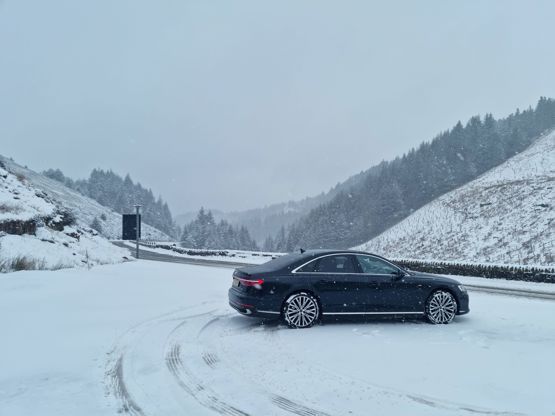
A particular highlight was crossing Snake Pass, in the Peak District, during an unexpected snow storm. The thought of driving a near-six-figure car in such conditions may seem daunting to some, but the A8’s high-level of engineering and robustness meant it was the perfect car for the job.
The plug-in hybrid powertrain is mightily impressive. It shifts the two-and-a-bit tonne A8 with frightful pace. Even the EV Mode, where it runs purely on battery, is pokey enough to get you to motorway speeds.
Our overall fuel consumption figure is 36.3mpg, which isn’t bad for a 460PS, all-wheel-drive luxury saloon. According to the car’s computer, 31% of our driving was done using purely the electric motor. That’s more than 3,000 miles where the A8 was pumping out no tailpipe emissions. I think we could have achieved even higher results if we’d stuck to a regular commute and charged up every night. Many of my journeys were far in excess of the A8’s battery range, however.
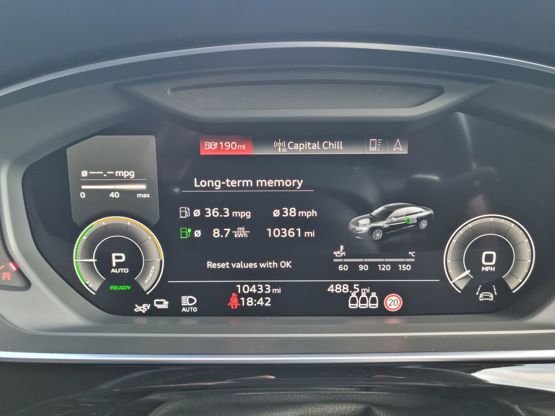
The next generation A8 will, of course, be fully electric and will step up against the BMW i7, Mercedes EQS and electric Range Rover. Something the current model is unable to do.
For convenience and simplicity, at the moment, the A8 60 TFSI e still makes plenty of sense. It’s zero-emission capability is ample for use in cities and urban environments, but it also provides the confidence on longer trips thanks to that petrol engine.
Just the right amount of assistance
When Audi showcased the current A8 to world, it had one headline feature: automated driving. It was the first car to have true Level 3 autonomous capability, meaning drivers would be able to take their hands off the wheel for extended periods in certain circumstances.
Legislation, back in 2017, didn't allow such tech, so production A8s were never equipped with the full capability. But, recent changes un UK law have meant the technology can now be introduced and Ford is the first manufacturer to offer it.
The Traffic Jam Pilot system Audi was planning would take over at speeds of up to 37mph, and would be useful in slow moving traffic. Legislation now allows such systems to operate at speeds beyond 70mph, although the Ford system deactivates if the driver stops paying attention, so is therefore classified as Level 2.
Audi's suite of driver assistance systems are highly capable. The A8's Predictive Adaptive Cruise Control makes long-distance driving stress-free and will automatically slow the car down for corners and roundabouts, as well as adjusting to the speed limit (if you wish).
The lane keeping system is effective and largely non-intrusive. I've never needed to wrestle the wheel back when passing a cyclist or crossing the white lines on a country lane. When the cruise control is activated the system steps up and centres the car in lane, essentially doing all the work. A sensor in the steering wheel tells you off if you let go for more than a few seconds, however. To deactivate the steering assistance simply press a button on the end of the indicator stalk.
One of my favourite assistance systems on the A8 is the adaptive regenerative braking. This uses the car's camera and radar sensors, as well as looking at mapping data, to establish when to deploy regenerative braking. Essentially, it means you can drive around using just the accelerator, but unlike "one-pedal-drive" systems, which apply full regen when you let off, the Audi system provides just the right amount of slowing to suit the conditions ahead. If you let off on a clear stretch of road, the car will freewheel, but do so on the approach to a roundabout or when behind a slowing moving vehicle and it will shed speed and even bring you to a complete stop.
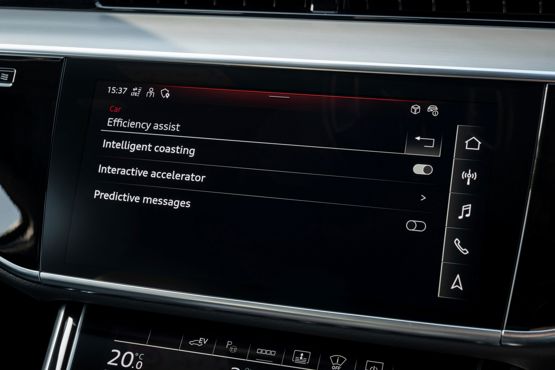
You can even enable a haptic feedback function whereby the accelerator pedal will push back slightly to let you know when the optimum time to let off is.
One function surprisingly absent from out A8's spec list is blind spot monitoring. It comes as part of the £1,470 City Assist Pack, which also includes a lane change assistance feature and front cross-traffic assist, which warns the driver of cross traffic approaching the vehicle at intersections with poor visibility and in exit roads. It's a feature I'd expect to see as standard on a car costing almost six figures - especially when it can be found on superminis, which are much easier to slip into gaps in traffic.
As cars become more automated, safer and rely on technology more, driver engagement can become diminished. While the A8 has an impressive arsenal of tech, it's still a great car to drive and doesn't suffer from irritating and relentless beeps and interruptions that lots of other new cars provide.
The biggest plug-in luxury bargain?
With prices starting at less than £90,000, the A8 plug-in hybrid is a bit of a bargain. No, really, bear with me on this…
Looking at it pool of rivals, the two most prominent contenders are the new Range Rover and the Mercedes-Benz S-Class. The Range Rover starts at £115,000, for the P460e, while the S-Class S 580e can be had for £111,850.
All A8s have Quattro all-wheel-drive, while the Range Rover, naturally, powers all four of its wheels, too. The S 580e is rear wheel drive, but it does have the most powerful powertrain with 510PS. The Range Rover serves up 460PS and the A8 462PS.
Both on paper and in the real-world, the A8 feels the fastest. All three utilise turbocharged six-cylinder petrol engines to complement their electric capability.
Now, the A8 does fall short when it comes to range. Its battery is good for around 38 miles, according to WLTP, while the S-Class manages 62 and the Range Rover can cover 75. The S-Class’s battery has a capacity of 28.6kWh, while the Range Rover’s is 38.2. Both feature 50kW fast charging capability, too. The Audi makes do with a 17.9kWh unit and can only charge at 7kW.

Where the A8 sits in the 12% BiK band, the S-Class attracts just 8% tax, while the Range Rover slips into the 5% band. It means the A8 will attract the highest bills, despite being the cheapest car.
The Audi does win back some points, however. Firstly, it’s the lightest and therefore the most fuel efficient when driven on petrol alone. We’re regularly seeing more than 40mpg from our car on long jaunts. When we recently tested the Range Rover, the economy dropped below 30mpg when the battery was discharged.
The A8 is also the most enjoyable to drive of the trio. It feels more planted on the road, more responsive and gives the impression it was engineered to be driven as much as it was to be driven in.
Both the Range Rover and Mercedes benefit from a newer-generation of infotainment system and have cabins with fewer buttons. But I prefer the Audi’s interior. It feels more purposeful, sportier and it’s easy to operate the key functions via the two touchscreens and array of physical buttons.
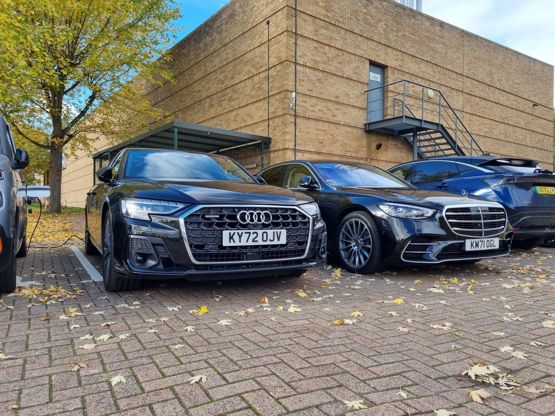
In previous reports I’ve mentioned the A8’s 390-litre boot being a little small and, when compared to its rivals, this is quite apparent. The S-Class offers 535 litres and the Range Rover more than 800 litres.
When it comes to spec, all three are packed to the rafters with electrically adjustable bits, clever LED headlights and semi-autonomous driving features.
Just a few years ago, the luxury car segment was dominated by saloons from Audi, BMW and Mercedes. These days the registrations for all three are eclipsed by the Range Rover, while even the likes of Bentley and Rolls Royce are now making SUVs.
The new Range Rover is a marvel of engineering, packing in space, efficiency and performance without harming off-road capability. It’s also massive, a little cumbersome and frighteningly expensive.
Mercedes has long been the segment favourite, with its S-Class setting the benchmark for luxury cars for almost a century. But the latest model doesn’t really move that game along and it feels less engaging to drive than before.
The A8 may not have the fanciest touchscreen or the longest electric range, but it does all the bits you need from a luxury car just as well as its peers, while offering lower operating costs, better real-world economy and the most engaging drive.
Blending performance with efficiency
The Audi A8 has had its fair share of movie appearances over the years, most famously (according to multiple online sources) in the 1998 film Ronin. As impressive as its performance was on screen, it wasn’t until the A8 appeared in the second The Transporter film that my interests were piqued.
I therefore tried to mirror the specification of the movie car as closely as possible, when ordering 'our' A8, opting for Mythos Black paint and diamond cut 20-inch alloy wheels.
Jason Statham’s character Frank Martin chose to drive the 6.0-litre W12 variant, sitting at the top of the line-up in 2005. Its 12-cylinder engine was exactly twice the size of that in our test model, which unofficially pays homage to its forefather by wearing the ‘60’ TFSIe moniker. The ‘60’ denotes it as the top-of-the-range A8.
The twin-turbocharged V6 petrol engine, combined with an electric motor that’s built into the car’s eight-speed automatic gearbox, develops 462PS and 700Nm – a healthy margin above the 450PS and 580Nm produced by Martin’s W12. It means ‘our’ car can reach 62mph from rest in 4.9 seconds, while the mid-range punch is nothing short of immense.
No thanks to its 14.1kWh battery, the 60 TFSIe tips the scales at around 300Kg more than its forefather – at 2,310Kg. Despite this mass we’re regularly achieving north of 38mpg, with some steady motorway trips returning around 45mpg. The official figure of 156mpg seems farfetched, unless you spend a lot of time driving purely in EV Mode.
It’s only when the battery is discharged and the car is used for short, cold trips that the mpg readout becomes more akin to that of a W12 powered car. In the recent cold weather I managed the grand achievement of 16mpg on a four-mile commute.
If Martin were to choose a car for his private transporting business today, I think he’d be very impressed by the latest A8. It delivers the performance and comfort that’s to be expected from a flagship, but with the efficiency of the base-model diesel.
What does it have in common with an A1?
The A8 sits at the top of Audi’s line-up, but its influence can be felt throughout the range, even in the carmaker’s entry-level A1 model.
Priced some £55,000 beneath the flagship saloon, the compact A1 shares a familiar face with its stablemates and includes some of the A8’s best attributes.
Both cars are equipped with Audi’s distinctive LED lighting signature at the front and rear. The A8 showcases the latest in lighting technology by adopting super-precise HD Matrix technology that can make rapid adjustments to the beam pattern dependent on the conditions ahead.
Audi’s MMI infotainment system was introduced in the 2003 A8 model and the latest version made its debut in our A8 before making its way into the A1.
Using an 8.8-inch glass touchscreen with haptic feedback, the set-up offers crisp graphics, fast and easy-to-use menus, and connected services including updates.
Drivers of both models also get Audi’s virtual cockpit digital instrument cluster, which is among the best on the market. The display is customisable, giving options from traditional dials to a full-screen map.

As the bookends of the Audi range, some differences between the two cars are apparent.
First, is size. The A8 is more than 1.1 metres longer than Audi’s smallest model. It means the A1 is quite a bit easier to park – mainly because it actually fits in the average-sized space – but on the road the A8’s bloat is less noticeable thanks to its competent air suspension system.
When it comes to boot space, the plug-in hybrid battery in our 60 TFSIe variant means there’s only a 55-litre difference in luggage space between the two models. The A8 has a capacity of 390 litres.
Audi’s attention to refinement and sound-proofing is noticeable in both cars, with the A1 among the best in its segment. The A8 takes things a step further, with the likes of double-glazed windows.
These innovations will be crucial as the brand rolls out a new range of electric models.
Real-world battery range tested
The facelifted A8 welcomed a new, larger 17.9kWh hybrid battery, capable of powering it for up to 37 miles. In the three months since we took delivery of our car, achieving close to the claimed range has been easy.
Before the colder weather set in, we were managing 35 miles per charge from mainly urban driving, although that dropped to around 28 as temperatures reached single digits. Still, it’s a respectable achievement for a 2.3-tonne, tech-packed barge with all-wheel-drive. Performance in ‘EV mode’ is brisk enough for most driving scenarios, although at motorway speeds its more efficient to use the petrol engine as the charge depletes quickly.
The accelerator pedal has a haptic feedback function and lets you know when you’re reaching the limits of what ‘EV mode’ can deliver. If you push past the resistance, the engine will fire into life, meaning full power is always available.
There’s an annoying lag from the eight-speed automatic transmission when driving the car with a depleted battery. The engine switches off when you coast to a stop, but when there’s not enough charge to get you going there’s a pause while the engine restarts. It can be avoided by knocking the car into Sport mode, which keeps the engine running, or by keeping some residual charge in the battery.
I’ve also noticed, on particularly cold mornings, that electric driving is not always available at anything other that crawling speed, despite the battery being charged.
Perfect for long-distance touring
We’ve been putting the A8 through its paces this month, with various events, commuting and general errand running reinforcing the car’s impeccable cruising ability. However, none of these trips has really challenged it. A weekend away to the coast, therefore, gave us the chance to see what the A8 is really like to live with.
Step one was to pack the car up with all the paraphernalia needed for a few days away from home. This should be fairly straightforward for two adults and a small dog, but we managed to max out the A8’s 390-litre boot with our two small suitcases, coats, walking boots and pooch accessories.
While Audi has done a reasonable job of keeping the plug-in hybrid A8’s boot square, the 17.9kWh battery eats 115 litres of the space you’d get in a non-hybrid model. There’s also no space under the boot floor, or even a cubby hole at the side, to stash the charging cable – so you have to get used to it sharing space with your luggage.
Brimming the 65-litre fuel tank and charging the battery gives a predicted range of around 500 miles, which is perfect for long-distance touring. Each time you start the A8, it defaults to ‘EV Mode’ where it uses the available electric range before switching on the engine. If you input a destination into the sat-nav, or touch the ‘EV’ button on the lower touchscreen, the car switches to ‘Auto Hybrid’ where it intelligently blends the two.
In this mode, the A8 achieved 55mpg over 100 miles and we arrived with eight miles-worth of electricity in the battery.

As we neared the coast and the roads became narrower, the A8’s size required more consideration. Our car is only a standard-length wheelbase, but it still measures 5.1 metres, which is longer than a Range Rover and almost as long as the cottage we rented! Still, it’s nimble enough to thread through the various villages and country lanes encountered with no bother.
With less-than-ideal weather conditions at this time of year, the famous Audi Quattro all-wheel drive system provided both the reassurance that we wouldn’t get stuck on a verge and stability at higher speeds. It works all the time, even when you’re running on battery.
Audi A8 60 TFSIe S Line joins our fleet
Luxury cars serve two distinct purposes. The first is to provide unparalleled transportation for those with deep pockets and the other, more pertinent one, is to showcase the technology and engineering advances that will filter down into a manufacturer’s lesser models over time.
When it launched in 2017, the Audi A8 was one of the most innovative cars on the road. It came at a time when carmakers were just dipping their toes into electrification and autonomy, offering two headline capabilities. The first was mild-hybrid technology. It’s widely used now on cars in pretty much every segment, but the A8 was the first Audi to utilise the tech.
The A8’s other breakthrough was its self-driving capability. It was the first car capable of level 3 autonomy, thanks to a highly sophisticated driver-assistance computer, enabling true hands-off driving. Unfortunately, legislation put the block on the feature ever making it to market, but it’s still embedded in the car’s DNA and is used to power the core assistance systems.
In the past 18 months we’ve welcomed a new Mercedes S-Class and a new Range Rover, while BMW’s all-new 7 Series is just around the corner. So ,can the big Audi still cut it in an ever-evolving market?
To answer the question, we’ll be testing the freshly facelifted model for the next few months. Among the key updates are the introduction of a sportier S Line trim level and some high-tech new LED headlights.
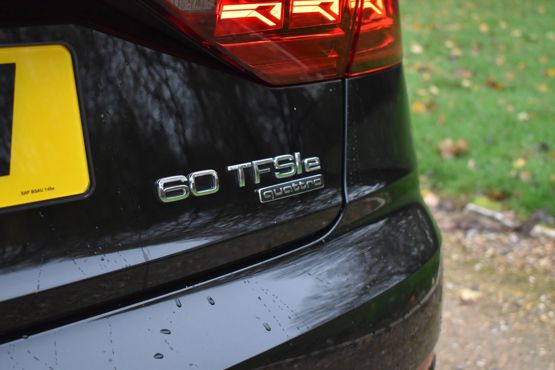
Our test car is the plug-in hybrid 60 TFSIe variant and, as you might expect, this isn’t any run-of-mill powertrain, it’s Audi’s flagship unit that’s also found in certain plug-in hybrid Porsches. It pairs a silky-smooth 3.0-litre V6 petrol engine with an electric motor in the car’s eight-speed automatic transmission.
As part of the facelift Audi has beefed up the battery to a 17.9kWh unit, giving a longer zero-emission range of 37 miles and CO2 emissions of just 40g/km.
We’ve opted for the new S Line trim and added the Comfort and Sound pack, which comes with an exhaustive list of standard equipment, and an equally large price tag of £94,860.
Matt has been an automotive journalist for nine years and has driven just about every new car and van that's on sale. As content editor - vehicles he is responsible for the automotive content on Fleet News and also contributes to Automotive Management. Prior to this, Matt worked in the automotive industry for 10 years.



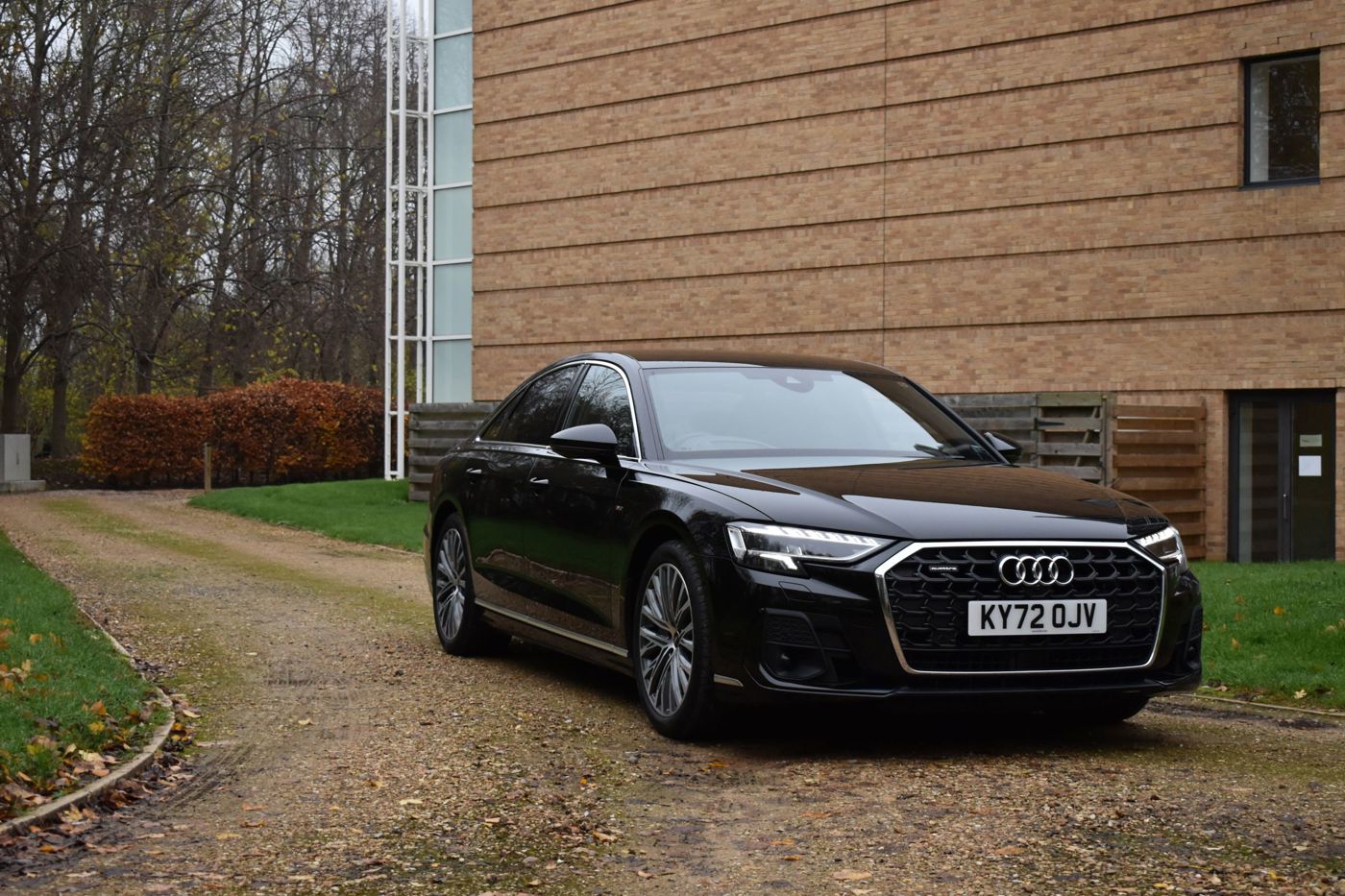
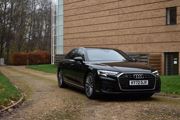
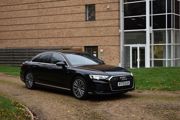
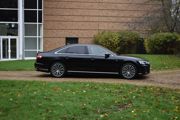
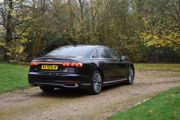

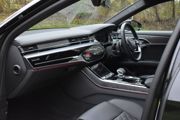

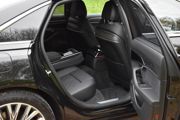

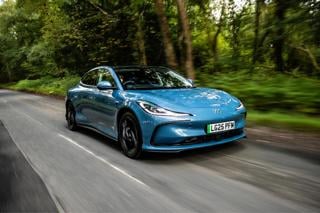

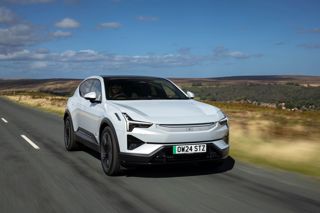














Login to comment
Comments
No comments have been made yet.